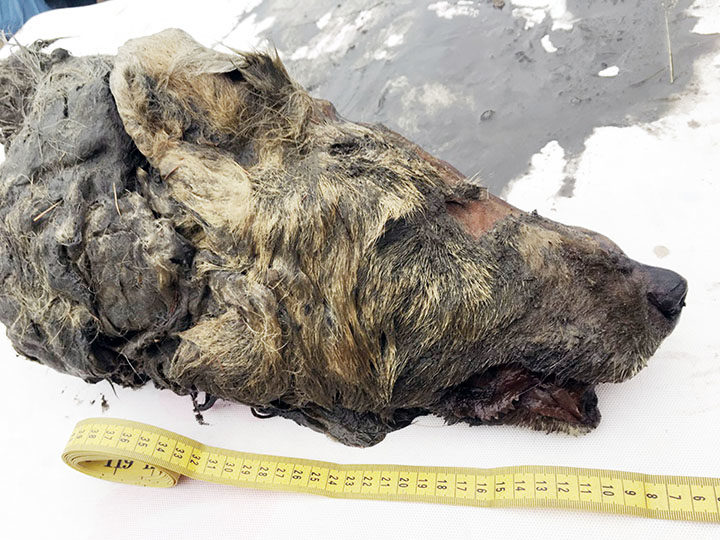
The severed head of the world's first full-sized Pleistocene wolf was unearthed in the Abyisky district in the north of Yakutia. Local man Pavel Efimov found it in summer 2018 on shore of the Tirekhtyakh River, tributary of Indigirka.
The wolf, whose rich mammoth-like fur and impressive fangs are still intact, was fully grown and aged from two to four years old when it died.
The head was dated older than 40,000 years by Japanese scientists. Scientists at the Swedish Museum of Natural History will examine the Pleistocene predator's DNA.
'This is a unique discovery of the first ever remains of a fully grown Pleistocene wolf with its tissue preserved. We will be comparing it to modern-day wolves to understand how the species has evolved and to reconstruct its appearance,' said an excited Albert Protopopov, from the Republic of Sakha Academy of Sciences.
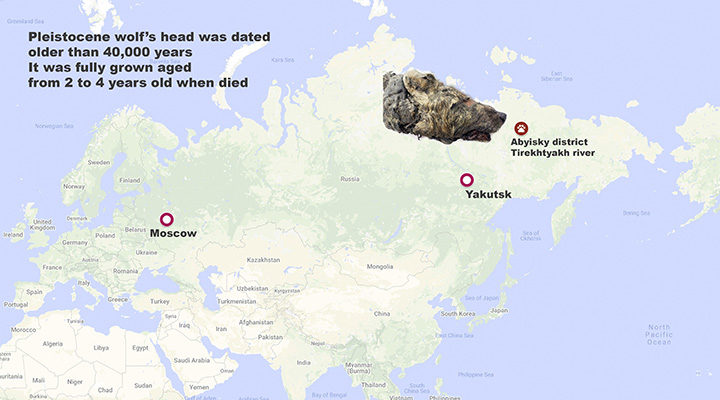
The astonishing discovery was announced in Tokyo, Japan, during the opening of a grandiose Woolly Mammoth exhibition organised by Yakutian and Japanese scientists.
Alongside the wolf the scientists presented an immaculately-well preserved cave lion cub.
'Their muscles, organs and brains are in good condition,' said Naoki Suzuki, a professor of palaeontology and medicine with the Jikei University School of Medicine in Tokyo, who studied the remains with a CT scanner.
'We want to assess their physical capabilities and ecology by comparing them with the lions and wolves of today.'
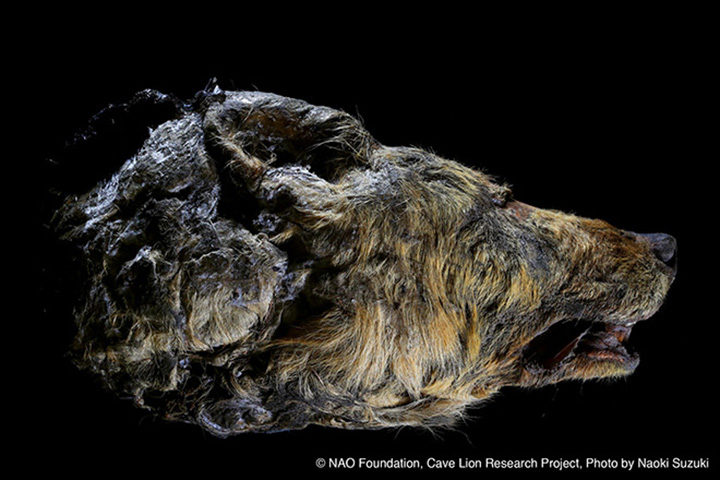
The recent discovery follows that of the remains of three cave lions in 2015 and 2017 by the same team.
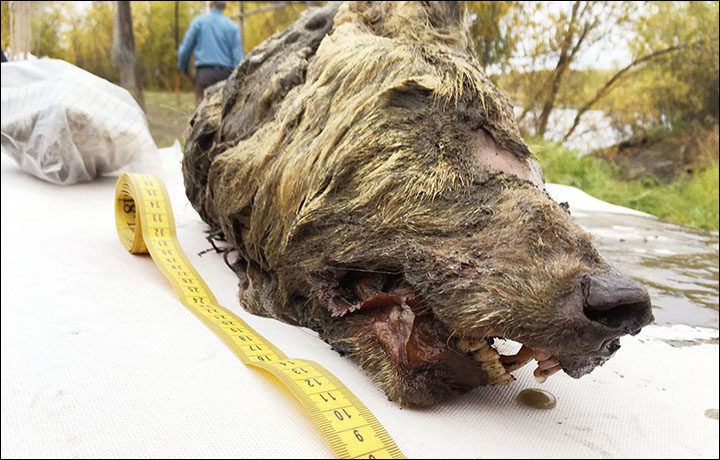
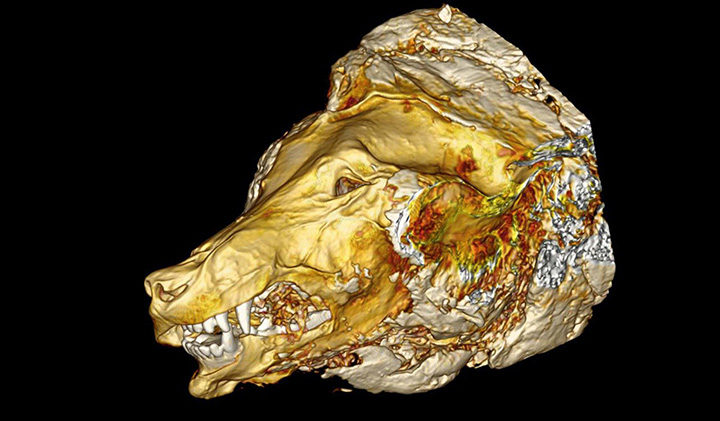
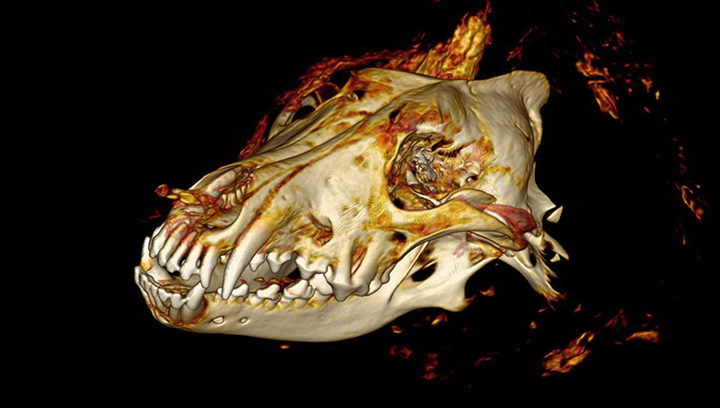
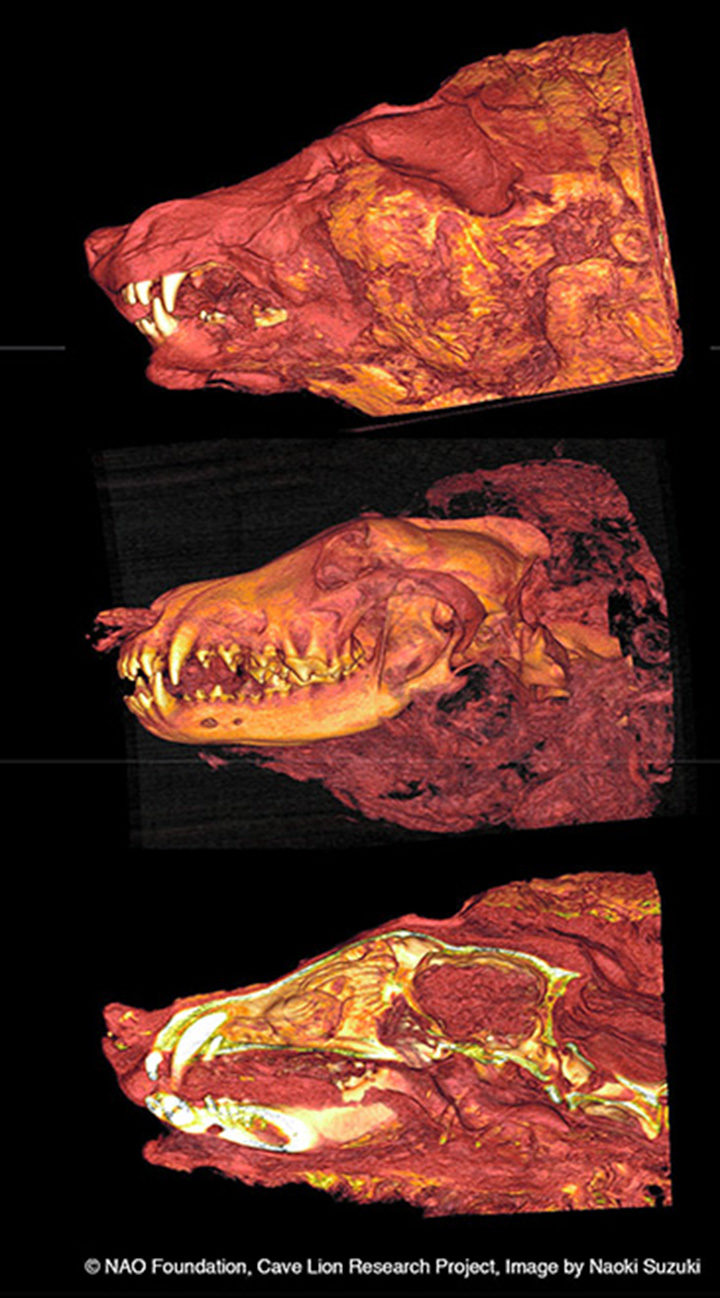
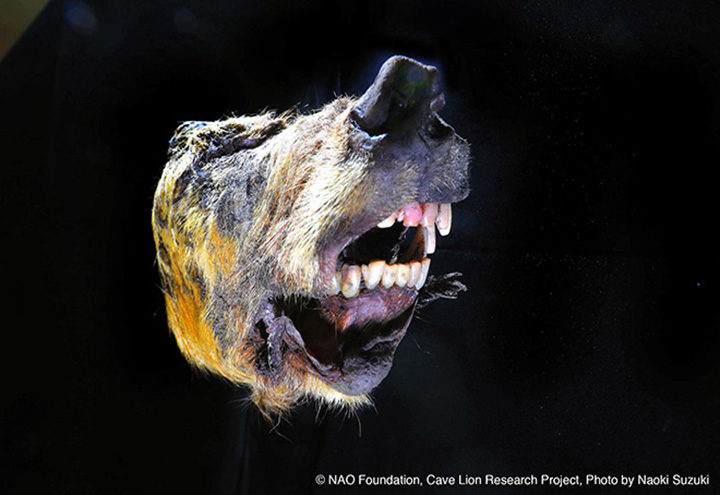
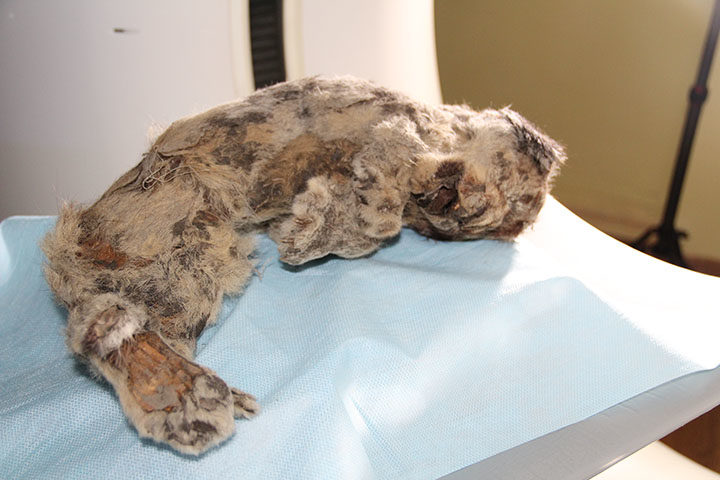
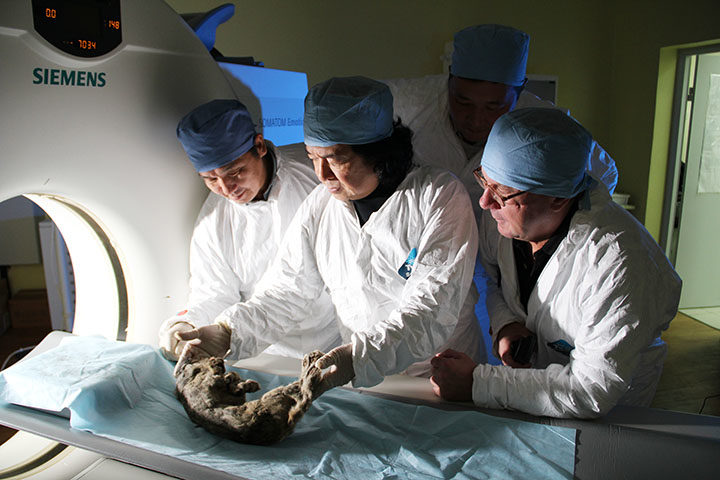



Reader Comments
Given the relationship to current wolf body length, this dude must have been around 220cm (head & body).
Who cut the wolf's head off??? When? Why?
R.C.
I see Yupo asked the same thing. Sorry.
RC